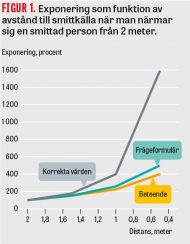Oxfordprofessorn Richard Dawkins har valt ut material publicerat av stora forskare och Nobelpristagare under 1900-talet. Författaren har en professur i »public understanding of science« och detta är en bok som han kanske pliktskyldigt har givit ut i sitt specifika ämne. Entusiasmen är dock stor och smittande. Han samlar texter från olika forskare som till del stödjer hans egna teorier uttryckta i »The Selfish Gene«, »The Blind Watchmaker«, »The Ancestor´s Tale« och »The Good Delusion« – där den senare är utmanande ateistisk.
I sina tidigare böcker är Dawkins analytisk och knivskarp, ibland bombastisk, men här ljuder texten mer öppen. Han citerar inte bara forskare inom utvecklingslära och biologi utan också inom teoretisk fysik. Hans intresse tycks balansera mellan författarnas ämne och deras sätt att uttrycka sig med skönhet i enkla termer, aforismer, och med allegoriska exempel så att man med hjälp av kända föreställningar kan ana hur komplexa skeenden egentligen hänger ihop. En poesi byggd på vetenskap, om vad, hur och varför.
Det är lätt att ta upp exempel som uppenbarligen har fascinerat Dawkins. Nedan finns ett axplock.
Colin Blakemore, neurobiolog i Oxford, följer en foton från solens yta till retina hos en människa:
»All the richness of our visual perceptions, all the information needed to recognise a grandmother´s face, comes from those tiny cells in the retina that know nothing but the number of photons hitting them.«
Nicholas Humphrey, psykolog i London, diskuterar medvetande och hur det kan tänkas växa fram under en människas första år. Han tar som liknelse en orkester som samlas. Musikerna förbereder sig, stämmer sina instrument:
»The noise from the stage is a medley of single notes and snatches of melody, out of time, out of harmony. Who would believe that all these independent voices will soon be working in concert under the conductor to create a single symphony.«
Albert Einstein om att »förstå«:
»When we say that we have succeded in understanding a group of natural processes, we invariably mean that a constructive theory has been found which covers the processes in question.«
Steven Weinberg, amerikansk nobelpristagare i fysik, skriver om teorier inom fysiken:
»There is another quality besides simplicity that can make a physical theory beautiful – it is the sense of inevitability that the theory may give us. In listening to a piece of music or hearing a sonnet one sometimes feels an intense aesthetic pleasure at the sense that nothing in the work could be changed, that there is not one note or one word that you would want to have different.«
Den amerikanske fysikern John Archibald Wheeler, som myntade uttrycket »svarta hål«, skriver apropå verkligheten:
»I suggest that we may never understand this strange thing, the quantum, until we understand how information may underlie reality. Information may not be just what we learn about the world. It may be what makes the world.«
Den teoretiske fysikern Paul Davies, verksam vid Arizona State University, förklarar världsalltets krökning:
»And just as one can circumnavigate the Earth by always aiming straight ahead – returning home from the opposite direction – so one could in principle go round the Einstein universe, by aiming in a straight line, never deviating and returning from the opposite direction to that in which you had set out. Indeed, with a powerful enough telescope, you could look right around the Einstein universe and see the back of your own head!«
Nöjet att läsa boken varierar med dess olika kapitel men den kan rekommenderas – här finns många höjdpunkter. Man undrar om Dawkins har ändrat sin inställning de senaste åren. Själv skulle jag vilja fråga honom om hur epigenetik och »parental imprinting« där miljö och »epigenetiskt arv« kan påverka vilka mönster i genomet som utnyttjas passar in i hans strikta darwinistiska tankevärld. Man anar att omgivning och intrauterina faktorer kan programmera genomet för bättre fysiologisk anpassning och även kanske beteenden hos en individ och dess avkomma i nästa och nästnästkommande generation. De 32000 generna utgör klaviaturen men musiken kan varieras.
Jag har just skickat ett brev till Oxford för att få svar på denna fråga.




















